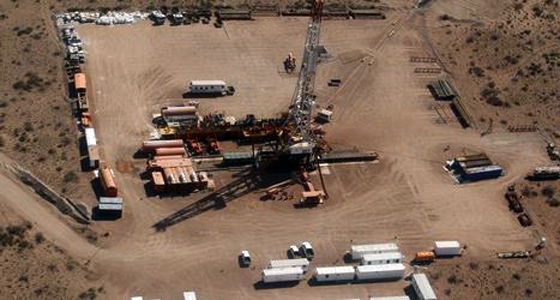Saudi Arabia is pushing to boost its oil production capacity by 1.75 million barrels per day by 2017 and is fast-tracking shale gas exploration, analysts say.
Producers outside the Organization of Petroleum Exporting Countries will increase 2014 output by a near-record 1.7 million barrels a day to 56.4 million, the International Energy Agency said earlier.
OPEC’s 12 members will need to pump an average 29 million barrels a day in 2014, about 100,000 less than the IEA had predicted last month and almost 1 million a day less than the group is currently producing, the agency said.
Analysts said there are indications that Saudi Arabia is cranking up production already at a 32-year-high of more than 10 million barrels per day to cover shortfalls in crude exports by trouble-plagued Libya.
But the new program is a major shift in its strategic oil policy and has wider strategic objectives, industry analysts indicate. The Kingdom is recalibrating its energy industry to meet the challenge of the United States’ unprecedented production surge from its vast shale oil holdings.
“To meet the projected domestic and global demands by 2020, Saudi Arabia will have to pump between 12.5 million and 15 million bpd,” Global Risk Insights observed recently.
“Any regional event on a par with the Libyan civil war … could send oil prices shooting upward, unless Saudi Arabia retains enough space capacity to fill the resulting supply gap.”
While the Kingdom seeks to develop new fields, enhance production from mature fields past their prime, “much of the incremental capacity will have to be ring-fenced for power generation in the Kingdom,” Oxford Analytica observed.
“Although the rate of increase of domestic burn has at least slowed as new natural gas fields have come on stream, concerns remain that continued rising domestic demand will crowd out the Kingdom’s oil exports,” Oxford Analytica said.
The Saudis have commenced an enhanced oil recovery program at Ghawar, the world’s largest conventional oil field which has maintained an average production rate of 5 million bpd since the 1970s.
Ghawar also produces 2 billion cubic feet of natural gas a day.
Ghawar was brought on line in 1951 and is believed to have at least 70 billion barrels in reserves remaining.
The original plan for Saudi Aramco to start exploration in 2020 has been rushed forward seven years.
Unconventional gas reserves are almost completely untapped in the Middle East. But in March, Oil Minister Ali Naimi estimated Saudi Arabia has 600 trillion cubic feet of shale gas, more than double the Kingdom’s proven conventional reserves.
SG/Agencies
14 October
























































